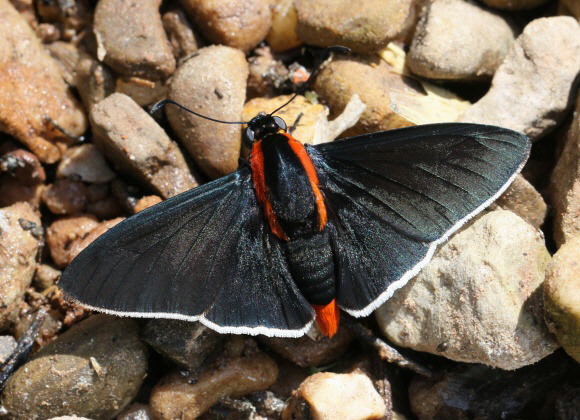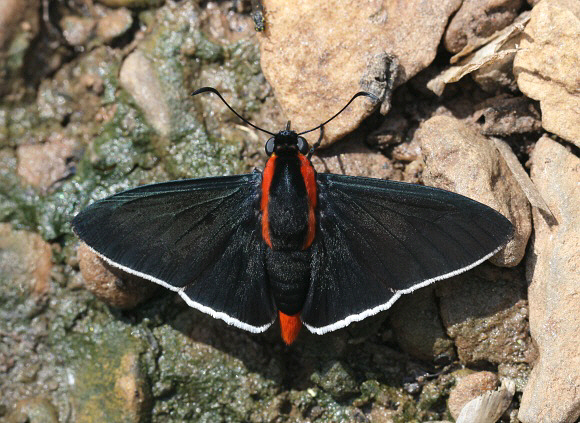
Introduction
The subfamily Pyrrhopyginae comprises 163 known species, most of which are found only in the tropical rainforests and cloudforests of South America, although a few reach as far north as Mexico, and a single species reaches Arizona. They are characterised by having bodies which are very large in proportion to the wings. Other characteristics include a massive muscular thorax, compressed abdominal segments, prominent eyes, and antennae with recurved clubs.
The 38 species in the genus Pyrrhopyge are all similar in appearance, typically having a black or dark brown ground colour, and white or orange fringes. In all species the tip of the abdomen is red, and in many species the head is also red. A few species including telassina and papius have bright red shoulder streaks. Distinguishing these 2 species is easy – telassina has orange fringes to the wings, but in papius these are white.
Pyrrhopyge papius occurs from Colombia to Bolivia, and has 2 recognised subspecies.
Habitats
This species occurs in mid-elevation cloudforest, at altitudes between about 500-1200m.
Lifecycle
To be completed.
Adult behaviour
Males can be seen settled on the ground imbibing mineralised water from wet rocks, small pools, or at the edges of rivers and lagoons. They are usually seen singly but at certain sites during the peak flight season massive aggregations can sometimes be seen at rich sources of mineralised moisture – e.g. at Rio Kosnipata in Peru I once observed an aggregation of hundreds of this species, clustered tightly together at the base of a concrete bridge.

